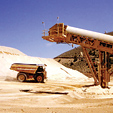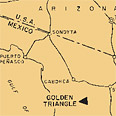All Articles
Legislative and Regulatory Update
January 2005 by Staff
• “No surprises” rule restoredThe Bush administration announced it is restoring the “no surprises” rule.
The rule will once again give assurances to miners, timber companies and homebuilders that projects already approved would not be harmed by new listings or designations under the Endangered Species Act.
Environmentalists had filed suit to block the rule. US District Judge Emmet Sullivan blocked the rule in June 2004, ordering the government to allow public input on the subject. The comments were collected and the rule was reissued in early December 2004.
The Fish and Wildlife Service said it had received about 250 comments since June to comply with the judge’s order, mostly from people who felt the rules were appropriate. Some told the government it should have more of a free hand to revoke permits, or that it should create a new government fund to pay for restoring habitat in cases where permits and the developers’ conservation plans prove harmful.
• Supreme Court to address submerged lands in Alaska
Ownership of submerged lands in Glacier Bay and other areas in Southeast Alaska will be argued in front of the US Supreme Court in January 2005.
The Supreme Court agreed to take the case directly, avoiding the normal path through the lower courts.
The case started when the National Park Service angered Alaska commercial fisherman with a 1998 decision to phase out fishing in Glacier Bay.
The state filed suit, and will argue that Congress did not intend to include the bay itself when it created a national monument there in 1925.
The state also wants the Supreme Court to resolve the boundary dispute for the rest of Southeast Alaska’s inland waters.
“It’s part of that ancient battle of who owns the land in Alaska,” said Avrum Gross, former State Attorney General. Avrum fought the federal government in previous lawsuits over oil and gas deposits in the Beaufort Sea and Cook Inlet.
The federal government has given up control of most of the submerged lands in the disputed area, but the state will attempt to obtain control of remaining areas in January.
The US Justice Department is fighting Alaska’s attempt to acquire submerged lands in Glacier Bay and smaller pockets in isolated spots more than three miles from the shoreline. In September, Justice Department lawyers accused the state of using flawed legal arguments to obtain the tracts. They disagreed with the state’s view that Southeast Alaska islands should be considered an extension of the mainland—a legal distinction that would mold Southeast Alaska into two large bays containing numerous islands.
Federal ownership of inland waters “is a serious insult to the people in Southeast Alaska,” Assistant Alaska Attorney General Laura Bottger said.
Bottger said a precedent for the state’s argument was set when the Supreme Court ruled that Long Island is an extension of the mainland of New York.
The United Fishermen of Alaska supports the state’s claim.
“We think the state should have jurisdiction over every piece of land and water for fishing, hunting or mining…though we aren’t such poor sports that we don’t think there should be some wilderness areas, parks and national forests,” said UFA President Bob Thorstenson.
• Governors say reform the ESA
Several Western governors met in early December to discuss reform of the Endangered Species Act.
“What I believe is we want to recover the species,” said Colorado Governor Bill Owens, a Republican. “Let’s not use the act as a way to try to manage private and public properties. Let’s use the act to help us learn how to recover the species.”
The 18 states that make up the Western Governors Association say they are uniquely affected by the 30-year-old law. Nearly 70 percent of the nation’s endangered species are located in the West, according to the association.
Owens, the association’s chairman, supported efforts by House Resources Committee Chairman Richard Pombo (R-California), to change the law. Pombo hopes to line up support for his legislative effort to reform the act, which remains at the top of his agenda again when Congress reconvenes in January.
Pombo wants to require scientific peer review for any major decision under the act, including listing species. The congressman also wants critical habitat to be designated for species to be done more efficiently and with better scientific data.
“These governors will be very important to his goal and their goal of improving and modernizing the act,” said Brian Kennedy, a Pombo spokesman.
Republican Govs. Linda Lingle of Hawaii, Mike Rounds of South Dakota, Kenny Guinn of Nevada and Judy Martz of Montana also joined the call for reform of the act at a news conference at the opening of the two-day session in San Diego.
Governor Bill Richardson (D-New Mexico), however, said a major overhaul of the Endangered Species Act wasn’t needed. He said Pombo was setting the bar too high by calling for “stronger science” instead of “sound science.”
“I think you need sound science,” Richardson said. “I don’t think what we want to do is create a scientific definition that increases the possibility of extinction.”
David Hogan, of the Tucson, Arizona-based Center for Biological Diversity, an endangered species and habitat protection advocacy group, said most of the Western governors, with a few exceptions, want to gut the act.
“What’s clear from this meeting and other legislative proposals is that many lawmakers are mounting a campaign to really eviscerate our nation’s strongest wildlife protection law solely to benefit their cronies in the timber industry, mining industry and others,” he said.
The governors’ association praised a recent recommendation by Interior Department biologists against adding the sage grouse to the endangered species list. If added to the list, hundreds of thousands of acres could be encumbered with critical habitat restrictions.
• Miners need to stay involved in each state
The Montana legislature, like many other states, has numerous bills in the works on mining issues. Many of the bills or proposed bills relate to reclamation and/or bonding. The state legislature will be attempting to address these bills during 2005, and miners need to get involved.
Montana has at least 20 mining-related bills in various stages, with many still in draft form.
It’s fairly easy to find out what is pending in your own state by locating your state legislature on the Internet. A search on google.com for “Montana state legislature” directed me to the following web address: http://leg.state.mt.us/css/default.asp
Once there, I clicked on “Bills,” then “2005 legislative session.” The next page directed me to click on a search topic, and I selected “Mining and Minerals.” I searched for all bills pending under this category, arriving at the list of twenty or so mining-related bills.
Miners need to get involved and stay involved to keep restrictions and obligations reasonable. Learn what is pending, then contact your state legislator to get involved.
_______________
Thanks go to Alan Gilda for assisting with Legislative and Regulatory Update for this month.
Underground Mining: Getting the Ore Out
 Choosing the right method to move your ore and waste is all about making the right choices. Sometimes more than one method may be used during the life of a mine as an operation expands and grows.
Choosing the right method to move your ore and waste is all about making the right choices. Sometimes more than one method may be used during the life of a mine as an operation expands and grows.
Pombo Bill to Provide Some Relief for Miners
House Resources Committee Chairman Richard Pombo is no stranger to controversy. As we highlighted in our November 2005 issue, he recently pushed through a bill to reform the Endangered Species Act, providing much needed improvements.
The Golden Triangle of Sonora, Mexico
 The “Golden Triangle” dry placer district in Sonora, Mexico, lies some 80 to 100 miles south of the border. It is in desert terrain at elevations between 1,900 and 2,300 feet above sea level.
The “Golden Triangle” dry placer district in Sonora, Mexico, lies some 80 to 100 miles south of the border. It is in desert terrain at elevations between 1,900 and 2,300 feet above sea level.
Picks & Pans: Virginia Prospecting
.jpg) On a recent day in late November, the Virginia deer hunting season was in full swing. For most of the morning, while I was busy shoveling stream gravel into a sluice, the surrounding woods echoed with the sound of gunfire and...
On a recent day in late November, the Virginia deer hunting season was in full swing. For most of the morning, while I was busy shoveling stream gravel into a sluice, the surrounding woods echoed with the sound of gunfire and...
Ask The Experts: Is this BLM demand legitimate?
Q: The Arizona BLM state office has started sending out registered letters to association placer claim holders...
Uranium Industry Enjoys Rebound as Prices Nearly Triple
Watching a computer screen, Pat Drummond monitors a complex system of pipelines and vats that produce 55-gallon drums of uranium, weighing 600 to 1,000 pounds each, ready to be shipped to nuclear power plants across the globe.
Mining Stock Quotes and Mineral & Metal Prices
Subscription Required:
The Bawl Mill
• Convention Report
• Interview with Congressman Gibbons on Mining Law Reform
• The Art of Finding Coarse Gold Part II—Pocket Hunting for Residual Placers
• Gold Canyon Resources Targets Gallium
• Tucson Mountain Chaos
• Picks & Pans: Auburn Ravine Gold
• Suit Filed to Stop Mining in Northern California
• Niobium and Tantalum
• The Iola Mine Group, Montgomery County, North Carolina
• Effectively Using a Detector and Drywasher for Placer Gold
• Mining Companies Use Conservative Valuations
• Company Notes
• Accident at Robinson Mine Leaves Two Dead
• Looking Back
• Melman on Gold & Silver
• Mining Stock Quotes and Mineral & Metal Prices
Free:








